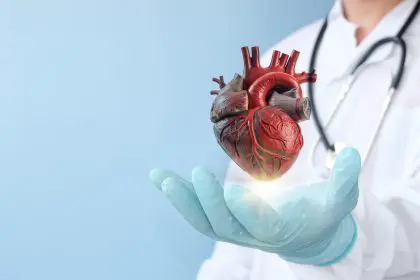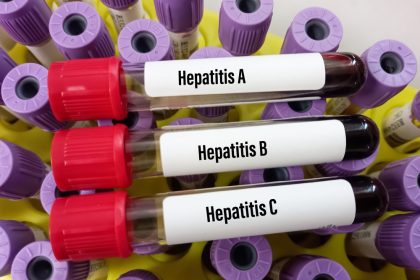That sudden chest pain hits without warning—your heart races, breathing becomes difficult, and fear takes over. In this terrifying moment, one crucial question emerges: is this a life-threatening heart attack or an intensely uncomfortable panic attack?
With symptoms that often mirror each other, distinguishing between these two conditions can be challenging yet potentially life-saving. Research shows that approximately 28% of patients arriving at emergency rooms with chest pain are experiencing panic-related symptoms rather than cardiac issues.
Medical experts at leading cardiac centers emphasize that understanding the key differences helps people make appropriate decisions about seeking emergency care.
Here’s how to recognize the differences between these two conditions and what actions to take during each.
The science behind the squeeze: what happens in your body
When a heart attack occurs, one or more coronary arteries—the vital blood vessels supplying your heart muscle—become blocked. This blockage, typically caused by fatty deposits that rupture and form clots, prevents oxygen-rich blood from reaching part of your heart. Without swift medical intervention, heart tissue begins to die within minutes, potentially causing permanent damage or death.
In contrast, panic attacks stem from your body’s fight-or-flight response gone awry. During these episodes, your sympathetic nervous system floods your body with stress hormones like adrenaline, causing physical reactions including increased heart rate, rapid breathing, and muscle tension. While intensely uncomfortable and frightening, panic attacks don’t cause physical damage to your heart.
Emergency medicine specialists note that both conditions can make you feel like you’re dying. The challenge is determining which one actually might.
The heart attack experience unfolds gradually
Heart attacks typically develop with a distinct pattern and progression that differs from the sudden onset of panic attacks. Understanding these patterns provides valuable clues during an episode.
Most heart attacks begin with mild discomfort that gradually intensifies. The chest pain often feels like heavy pressure, squeezing, or fullness—as if an elephant is sitting on your chest. This sensation frequently radiates to other areas, particularly the left arm, jaw, neck, back, or stomach.
The American Heart Association reports that many heart attack victims experience symptoms hours, days, or even weeks before a major event. These warning signs might include unusual fatigue, sleep disturbances, or mild chest discomfort that comes and goes.
Another telling sign is the relationship between exertion and symptoms. Heart-related chest pain typically worsens with physical activity and improves with rest, while panic-induced pain doesn’t follow this pattern.
Panic attacks arrive with lightning speed
Unlike the gradual onset often seen with heart attacks, panic attacks typically strike suddenly and reach peak intensity within minutes. This rapid escalation is a key differentiating factor.
During a panic attack, chest pain tends to be sharp or stabbing rather than the crushing pressure associated with heart attacks. The pain usually remains localized in the chest area rather than radiating to other body parts. Many people describe the sensation as knife-like or pinching.
The psychological component of panic attacks provides another crucial distinction. Overwhelming feelings of terror, fear of dying, or losing control typically accompany the physical symptoms. Many people experience a sense of unreality or detachment from their surroundings during these episodes.
Most significantly, panic attacks are self-limiting, typically subsiding within 20-30 minutes. Heart attack symptoms, by contrast, persist or worsen without medical intervention.
Breathing patterns tell different stories
The way breathing changes during each condition offers important clues about what’s happening in your body.
During a heart attack, breathing difficulties tend to develop gradually as the heart struggles to pump efficiently. This shortness of breath often worsens when lying flat and improves when sitting upright. Many heart attack victims describe the sensation as being unable to get enough air despite not breathing rapidly.
With panic attacks, breathing changes appear almost immediately and typically manifest as hyperventilation—rapid, shallow breathing that may lead to tingling in the extremities, lightheadedness, and even muscle spasms. This breathing pattern often creates a cycle that intensifies panic symptoms.
Healthcare providers note a useful distinction: During a panic attack, focusing on slow, controlled breathing often improves symptoms. With a heart attack, breathing exercises make little difference in the chest discomfort or associated symptoms.
Physical factors raise heart attack risk
Understanding your risk profile for each condition can help interpret ambiguous symptoms. Heart attacks are more likely in people with certain risk factors, including advanced age (particularly men over 45 and women over 55), family history of heart disease, high blood pressure or cholesterol, diabetes, smoking history, sedentary lifestyle, obesity, and previous heart issues.
The presence of multiple risk factors makes a cardiac cause more likely when chest pain occurs. However, heart attacks can and do happen in people without obvious risk factors.
Cardiologists emphasize that while risk factors provide context, they never definitively rule out a heart attack. Young, seemingly healthy individuals occasionally experience cardiac events, particularly with undiagnosed conditions like congenital heart abnormalities.
Psychological patterns point to panic
Panic attacks rarely occur in isolation. Most people who experience them have underlying anxiety conditions or significant stress that provides context for their symptoms.
According to the Anxiety and Depression Association of America, panic attacks commonly occur in people with various anxiety disorders such as generalized anxiety disorder, panic disorder, post-traumatic stress disorder, as well as major depression, specific phobias, or during periods of significant life stress.
Many people with panic disorder can identify specific triggers for their attacks, such as crowded spaces, health-related fears, or high-stress situations. The presence of these psychological factors and triggers suggests a panic attack may be more likely than a heart attack when symptoms develop.
People experiencing their first-ever panic attack often have no frame of reference, making the episode particularly frightening. Without previous history, many understandably assume the worst—that they’re having a heart attack—and seek emergency care.
Women face unique diagnostic challenges
Heart disease remains the leading killer of women in America, yet women often experience heart attacks differently than men, creating dangerous diagnostic confusion.
Research published in the Journal of the American Heart Association found that women are more likely than men to experience heart attacks without chest pain. Instead, they frequently report a constellation of seemingly unrelated symptoms such as extreme fatigue, upper back or shoulder pain, jaw or neck discomfort, nausea or vomiting, shortness of breath, and lightheadedness.
These symptoms can easily be dismissed as anxiety, stress, or panic—by both women themselves and sometimes by healthcare providers. This contributes to delayed treatment and poorer outcomes for women experiencing cardiac events.
Adding to the complexity, women experience panic attacks at twice the rate of men, according to the National Institute of Mental Health. This overlapping prevalence of both conditions creates particular diagnostic challenges.
Emergency response: when to call 911
Medical experts unanimously recommend treating any unexplained chest pain as a potential heart attack until proven otherwise, particularly for first-time episodes or when symptoms differ from previous panic attacks.
You should call emergency services immediately if experiencing chest discomfort lasting more than a few minutes, pain spreading to arms, neck, jaw, or back, shortness of breath, cold sweats, nausea, lightheadedness, symptoms that don’t improve with rest, or any chest pain if you have heart disease risk factors.
While waiting for emergency services, remain seated or lying down, take aspirin if not allergic and without medical restrictions, loosen tight clothing, focus on calm breathing, and have someone stay with you if possible.
Emergency physicians have tools to quickly determine if chest pain stems from a cardiac cause. An electrocardiogram (EKG) can identify heart attack patterns, while blood tests measuring troponin levels can detect heart muscle damage.
Managing panic attacks effectively
For those diagnosed with panic disorder, developing strategies to manage attacks reduces their frequency and intensity over time.
When experiencing panic symptoms, several techniques can help. Deep breathing exercises involving slow inhalation and extended exhalation can counteract hyperventilation. Grounding techniques that engage all five senses help reconnect with the present moment. Challenging catastrophic thoughts and using positive self-talk reminds you that while uncomfortable, these attacks aren’t dangerous. Physical interventions like progressive muscle relaxation or applying cold water to your face can trigger physiological responses that reduce panic. Many find comfort in contacting a supportive person who understands their condition, and some may benefit from prescribed medication.
Long-term management typically involves working with mental health professionals on comprehensive approaches. These may include cognitive behavioral therapy to identify and modify thought patterns, exposure therapy to reduce fear responses, appropriate medication, various stress management techniques, regular physical activity, healthy sleep habits, reduced caffeine and alcohol consumption, and mindfulness practices.
Many people with panic disorder benefit from creating an emergency plan that outlines steps to take during an attack, helping restore a sense of control during frightening episodes.
Prevention: protecting heart and mind
Both conditions respond well to preventive measures, many of which overlap and benefit overall health.
For heart attack prevention, a comprehensive approach includes regular cardiac checkups, maintaining healthy blood pressure and cholesterol levels, following a heart-healthy diet rich in fruits, vegetables, and whole grains while limiting saturated fats and sodium. Regular physical activity strengthens the heart and improves circulation. Avoiding tobacco in all forms significantly reduces cardiac risk. Moderation in alcohol consumption helps protect heart function. Managing diabetes appropriately prevents vascular damage, and consistently taking prescribed medications maintains cardiovascular health.
For panic attack prevention, working with qualified mental health professionals provides essential support. Identifying and addressing personal triggers allows for better preparation and management. Daily stress management through various techniques prevents the accumulation of tension that can precipitate attacks. Consistent sleep patterns regulate mood and stress responses. Limiting caffeine prevents stimulant-induced anxiety. Avoiding recreational drugs eliminates substances that can trigger or worsen panic symptoms. Building strong social connections provides emotional support during difficult times. Regular practice of relaxation techniques builds resilience against stress and anxiety.
Understanding the differences between these conditions empowers people to take appropriate action during frightening episodes. While panic attacks cause tremendous distress, heart attacks require immediate medical intervention to prevent permanent damage or death.
Healthcare professionals advise that when in doubt, always seek emergency care. It’s far better to visit the ER unnecessarily than to miss a heart attack. A thorough evaluation provides not just medical assessment but also peace of mind—which itself can help resolve panic symptoms.
















